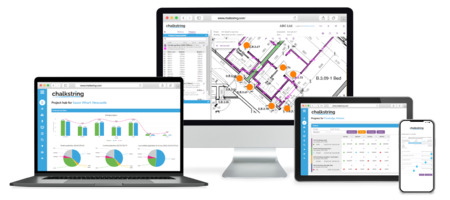How to find the right technology for your business

A recent McKinsey article discussing the ‘Next Normal’ states that the pandemic has forced the construction industry to focus on digitisation, and that significant investment is expected in technology as a result. The same article explains that there will be a major shift towards integrated systems that will replace the complex, fragmented, and multiple systems used to run construction projects.
Change is clearly afoot and there’s increasing pressure to focus on technology - but what does this mean in practice? How do you identify which technology will be the game changer that gives you a competitive advantage?
I’ve worked in construction software for over 15 years and all successful technology adoptions I’ve seen are where customers had a clear view of what they wanted to achieve from the outset. They’d identified their key issues and researched the right solutions to meet these needs. Here’s some best practice tips on choosing the right technology for your business.
An internal audit is often the best starting point. It’s like looking under the bonnet of your car and checking whether the engine is running as efficiently as it should or could be. I recommend identifying all your pain points and focusing on what’s burning unnecessary time and/or money. Involve your staff too, as they’re closest to your business processes and often have a different viewpoint from business owners. They can provide valuable insight into existing challenges and potential solutions - some known to you and others, perhaps, not.
Your audit will probably identify many great ideas, but you can’t action everything at once – and you don’t want to either. New systems often mean new processes. And these may take time to adopt, especially when your workforce is already busy. That’s why it’s important to establish priorities.
From your audit, I suggest you identify your top three challenges that you know technology could solve, then prioritise the one that offers the largest business gain. Consider whether you want to fix a single problem with a one solution, or whether you could solve several problems using an integrated solution. By identifying your overall goal, it will be easier to prioritise.
“If you don’t know where you are going, you’ll end up someplace else.”
Source: Yogi Berra
Now your priorities are set, establish who will be involved in the decision making process and set your selection criteria. Consider the ‘must-haves’ versus the ‘nice-to-haves’ - and be realistic. No off-the-shelf system will work exactly as you want, so you need to determine what you can and cannot compromise on. This will make it easier to compare solutions, as no two technologies are identical. Ask yourself:
-
Do you want a generic solution or one that’s written specifically for construction?
-
Do you want a cloud-based or server-based solution? What about additional hardware?
-
What training is needed and how is it delivered?
-
What about backup and support services?
Explain what you are looking for and be open to their knowledge and experience. Ask for as many demonstrations as you need and speak with existing clients for reference, as they’ll provide an honest opinion of both the software and the implementation process. And my last, and probably most important advice, is to look for a technology partner, not just a supplier. There’s a big difference. A supplier will simply sell you a solution, job done. A partner will invest time in your business, ensure their solution works for you and remain with you long after the excitement of your new system has worn off.
“A partner is a tailored business relationship based on mutual trust, openness, shared risk and reward that yields a competitive advantage.”
Source: Accu-Fab https://bit.ly/2q1JeEd
Technology can help to increase efficiency by automating tasks which would normally be carried out manually. This can free up time for employees to focus on other tasks which may be more productive. It's worth spending the time to really scope what your business needs and where technology can give you the biggest gain. By digitising your business, you can stay ahead of the competition and improve your bottom line.
If you're interested in seeing how Chalkstring could be a game changer for your business, get in touch.
 Digital take-off software for measuring and managing quantities from drawings.
Digital take-off software for measuring and managing quantities from drawings. 
 Software for managing all commercial activity on live projects in real time.
Software for managing all commercial activity on live projects in real time.  One system for take-off, estimating and managing live project commercials.
One system for take-off, estimating and managing live project commercials. 

